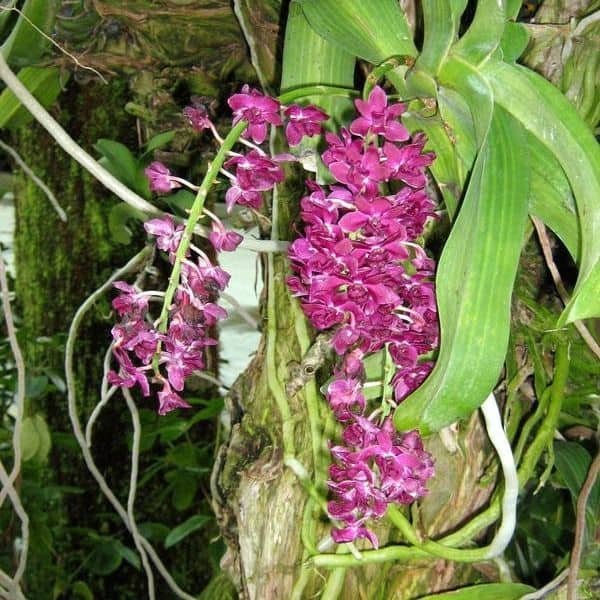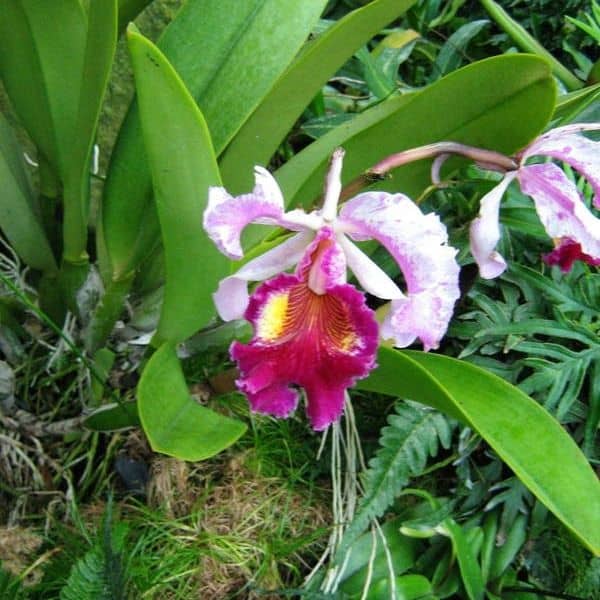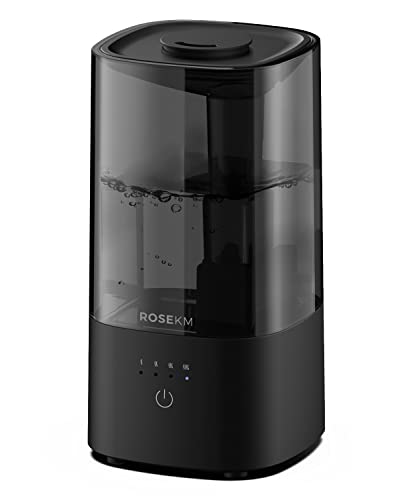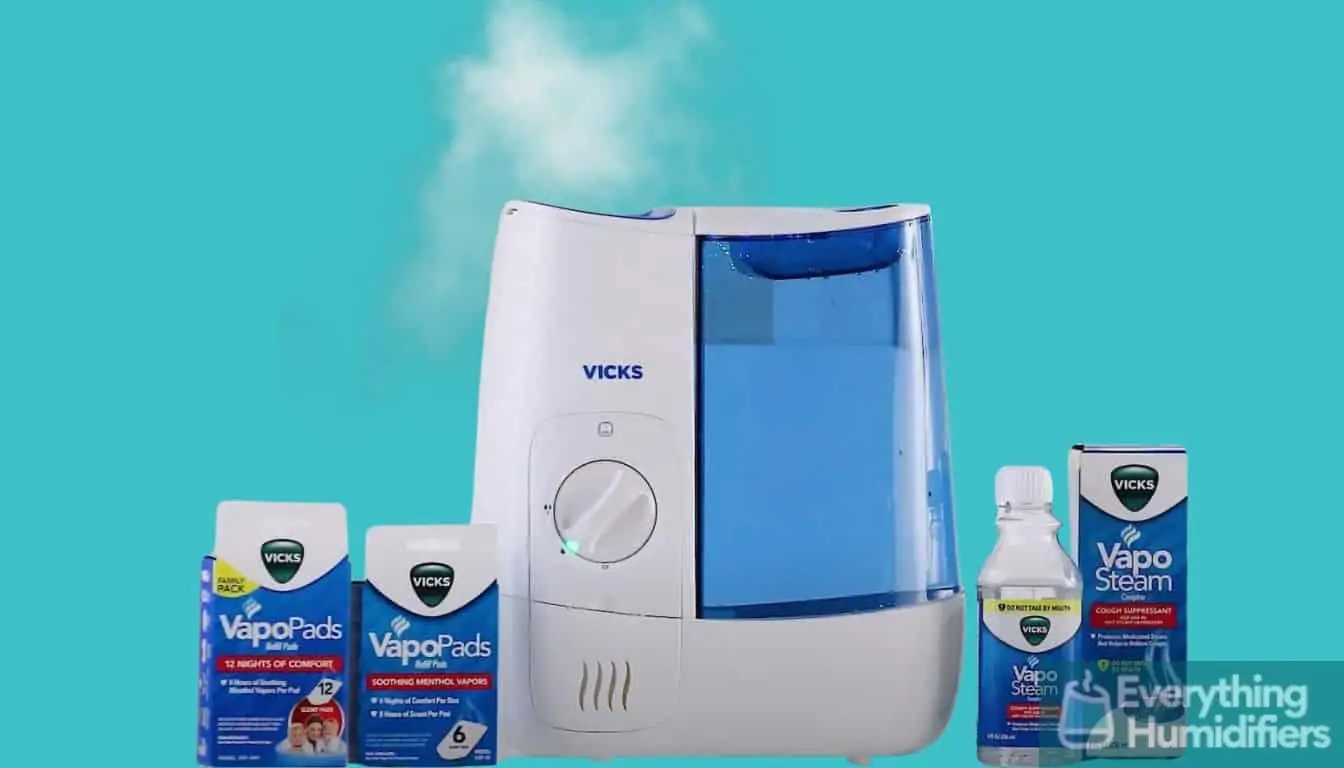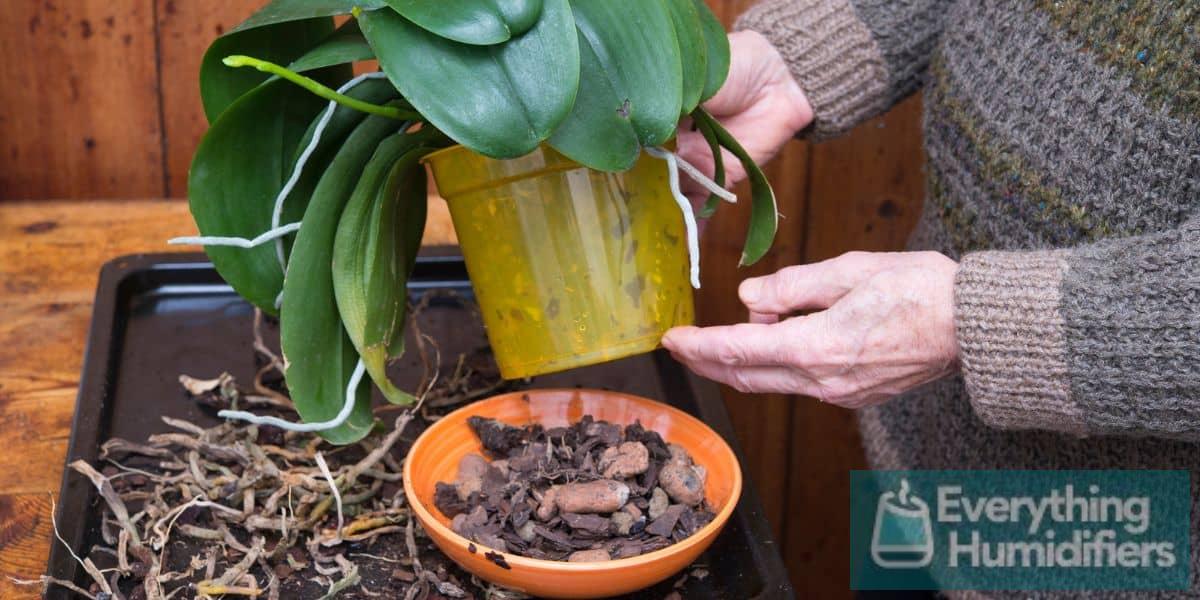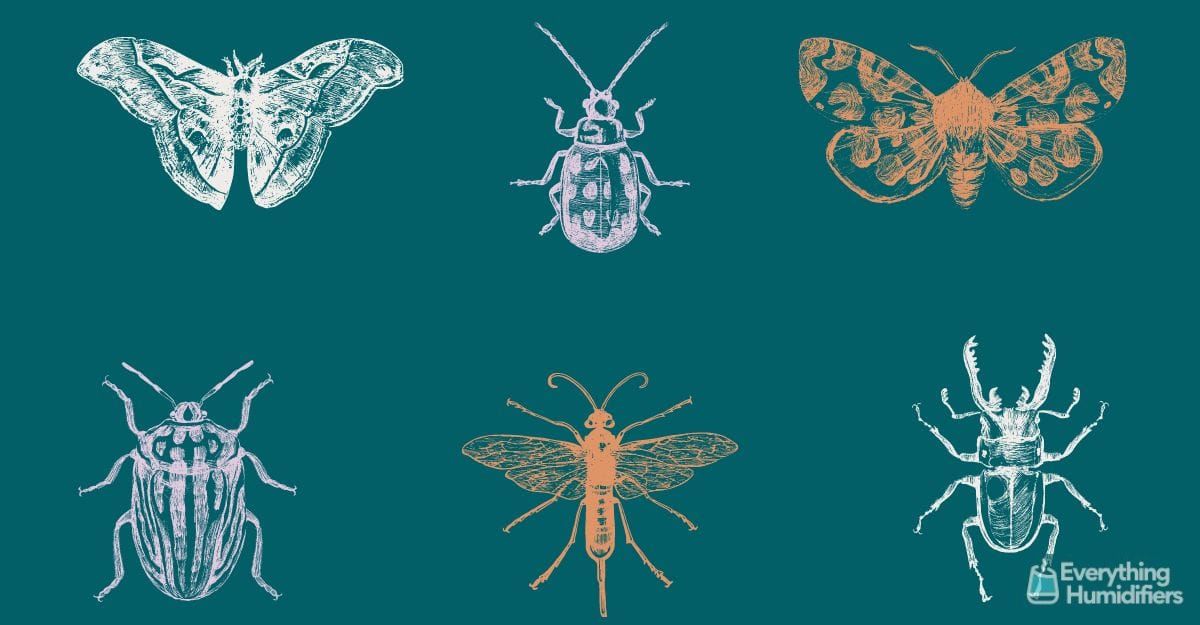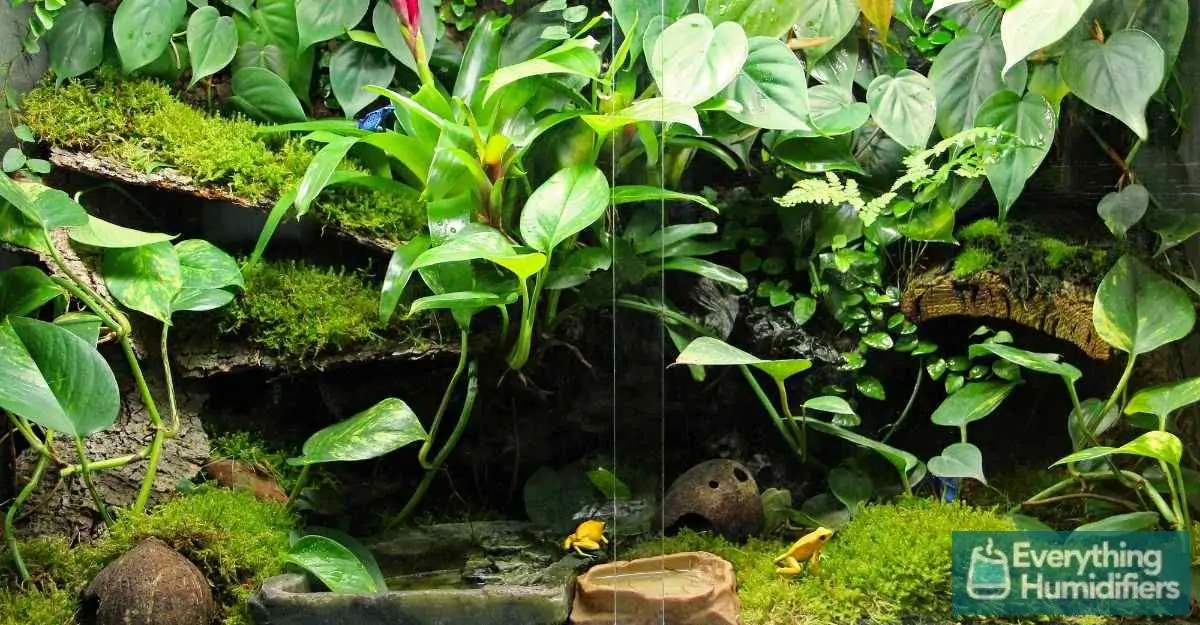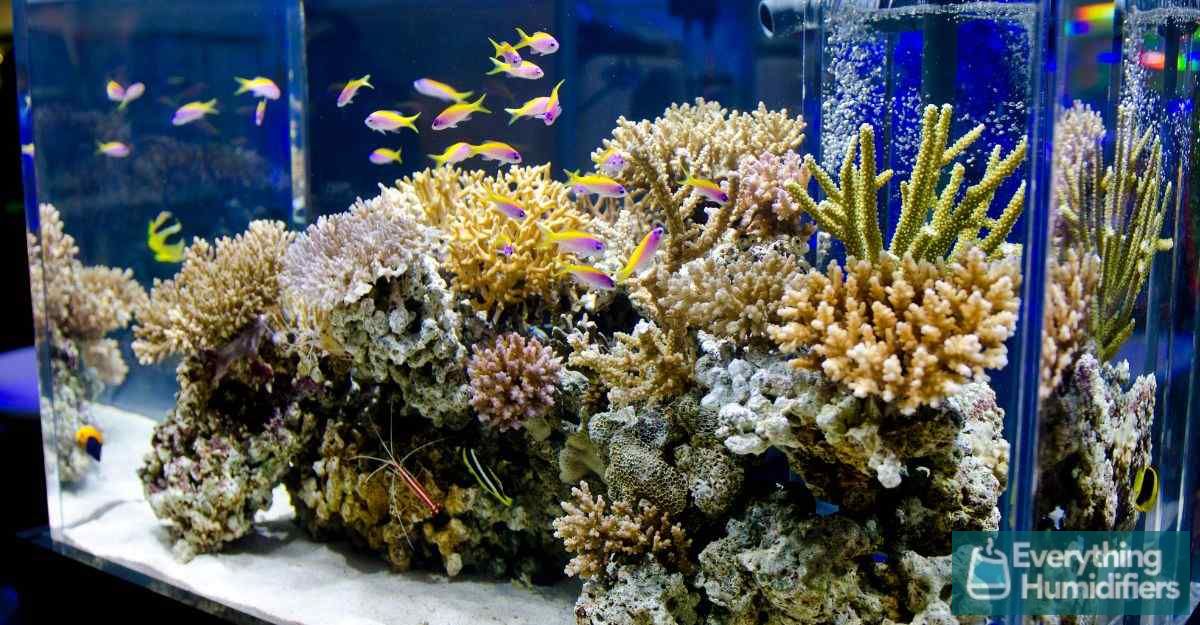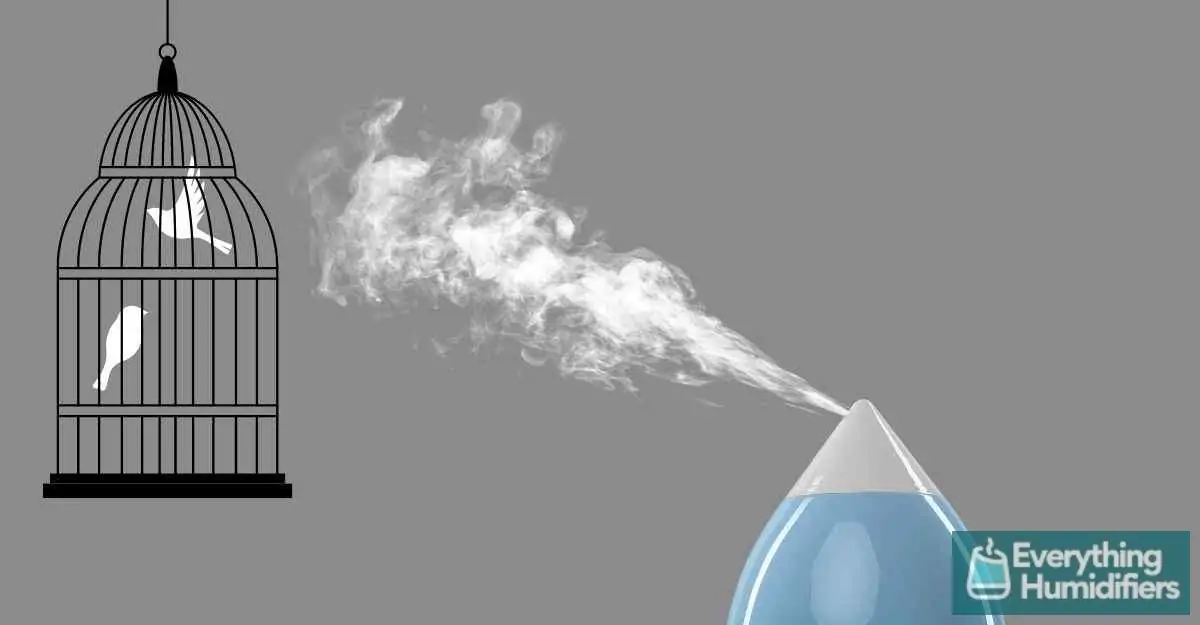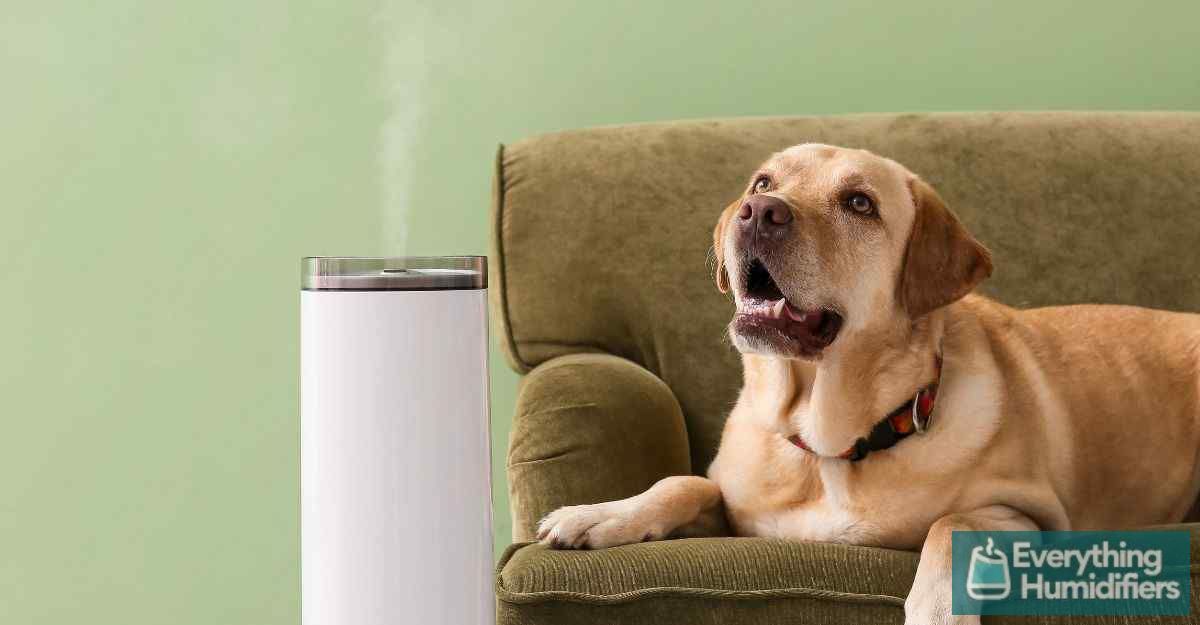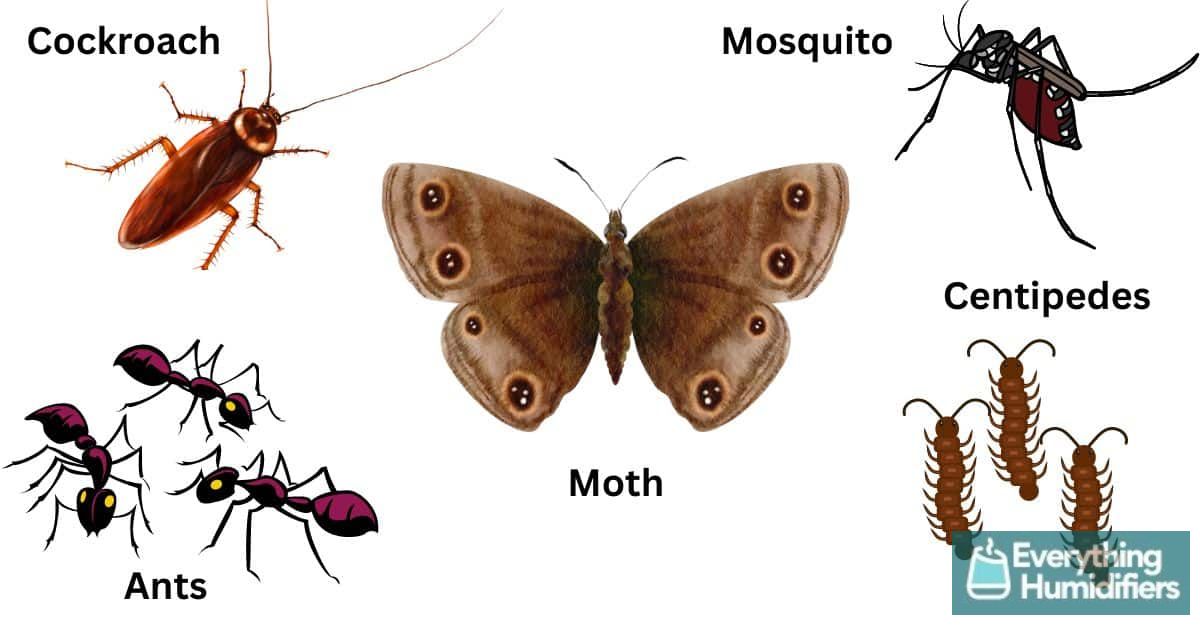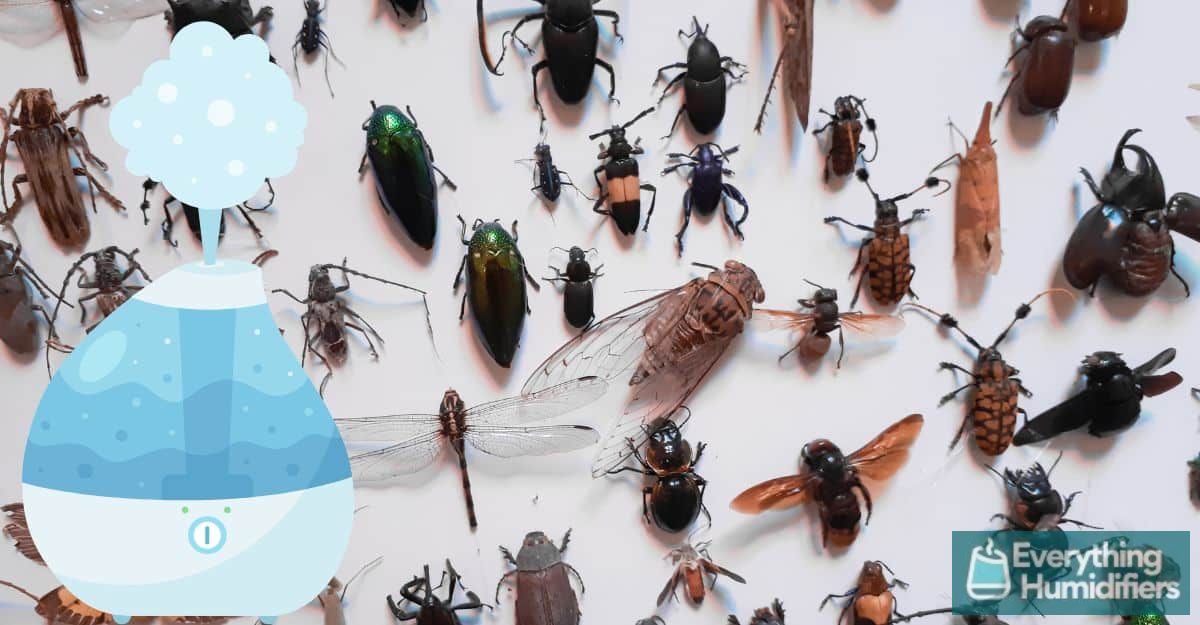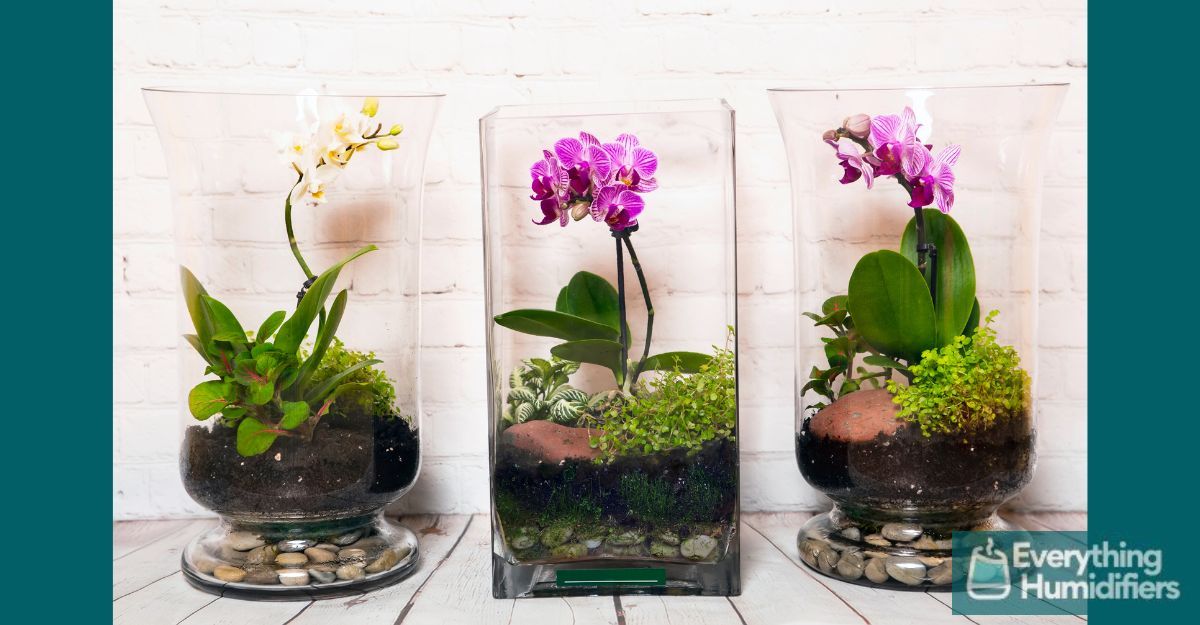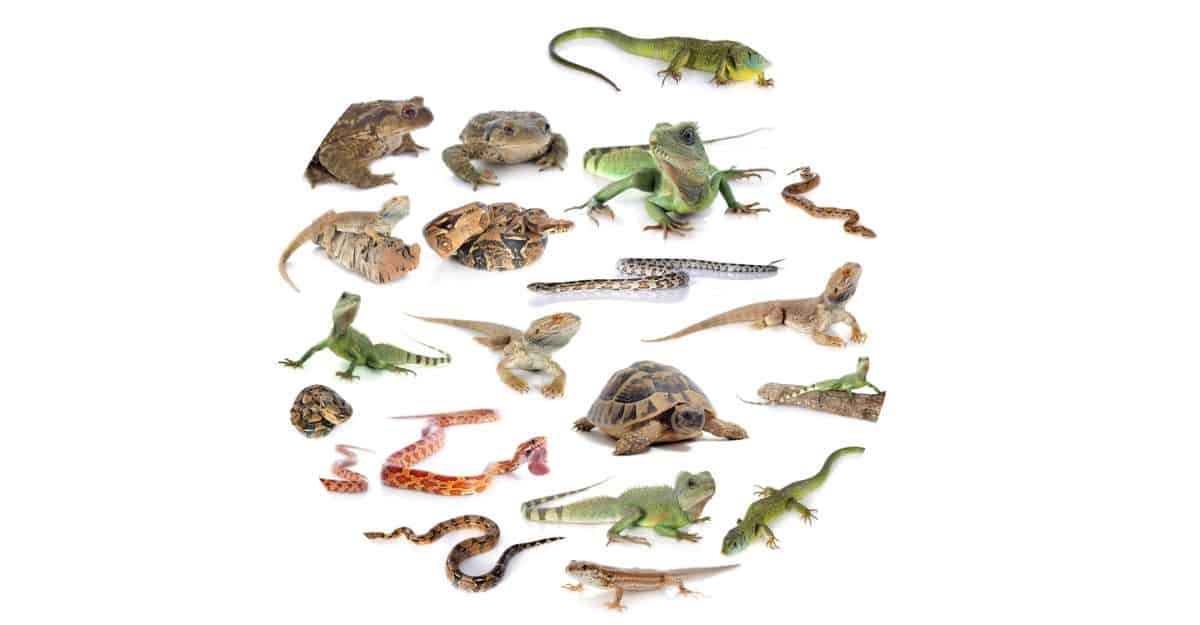Do orchids like humidifiers? In a word – Yes, they certainly do. This is because they need moist, humid, and warm air to thrive and stay healthy. A humidifier for orchids will help you provide exactly that.
Orchids are one of the most difficult plants to grow indoors. Many beginner gardeners are easily disappointed when they find that their orchids start looking limp, droopy, or even dying.
Don’t give up! Understanding how to create the perfect environment for your plants will go a long way to you having the exotic indoor garden you dream about.
Accept the challenge and you will be rewarded.
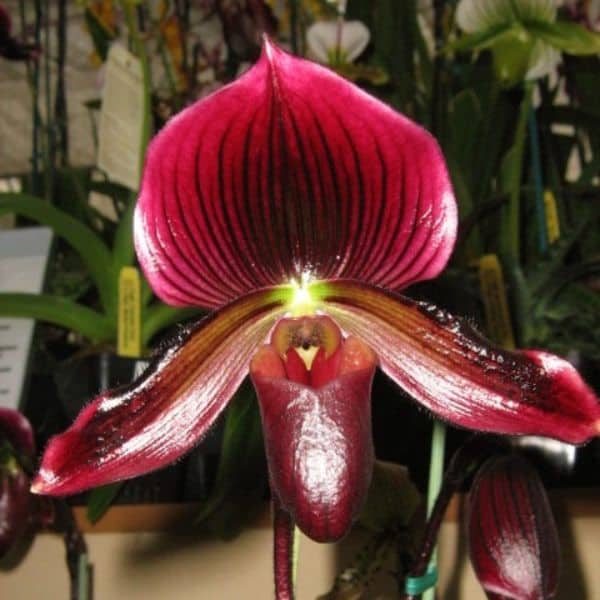
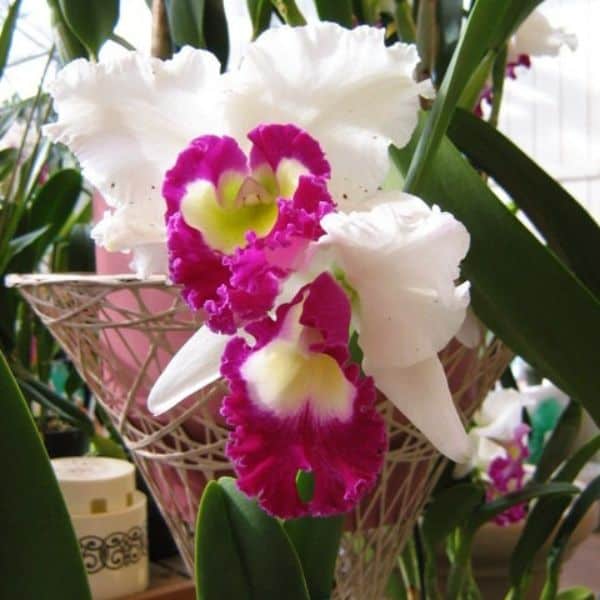
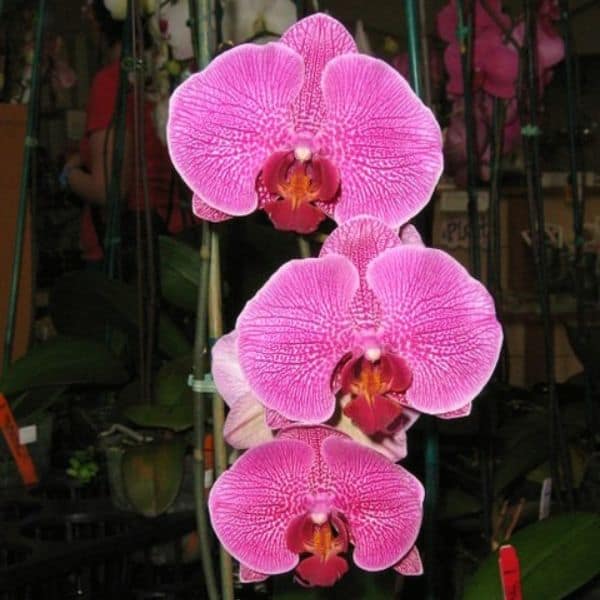
What are the best conditions for orchids?
To create the ultimate indoor garden, it is important to simulate as closely as possible the natural environment of your plants.
Orchids thrive in regions of high humidity. They are found growing in lush tropical forest regions and cloud forests where the air is moist, warm, and humid. This is due to high levels of rain and high levels of evaporation as heat converts rainwater into vapor.
Orchids also need a constant movement of air. Still air is not beneficial for any orchid. Without airflow, the leaves become overheated and damaged.
In these very hot areas, bacteria and fungi thrive on leaves that are constantly damp. Constant airflow reduces the build-up of moisture on the leaf surface, making them unattractive to pests.
None of us have a natural rainforest in our lounge, so, to get orchids to flourish, we need to increase the humidity and ensure that we have airflow.
Luckily, this can be done in a controlled way using an indoor humidifier for orchids. We want our garden to grow, but we don’t want to walk around our house holding an umbrella.
How to know if the humidity is too high or too low
Humidity is the amount of water in the air.
Measuring your air with a small device called a hygrometer is an easy way to establish the humidity of a room. This device displays a percentage on the screen. They are generally cost-effective and easy to operate.
The recommended humidity in an average home is between 40% to 60%.
Most orchids will require a higher-than-average humidity of around 50% to 70%.
If you use air conditioning, heaters, or home HVAC systems, these tend to dry out your air. You will then need to compensate by setting up a humidifier.
Once you become a loving gardener/plant parent who fusses over your plants every day, you can get a good idea of the humidity by simply observing your plants.
Here are some tell-tale signs to look for…
| What’s Wrong | How to Help |
|---|---|
| Flowers fall off | This is caused by low humidity. Orchids shed their flowers naturally every 6 to 10 weeks. If your plant is dropping its flowers more often, you need to increase the humidity in your indoor garden. Flower drop can also be caused by large fluctuations in temperature. Keep your orchids away from heat sources, air conditioners, and vents. |
| Leaf drop | Leaf drop can be caused by both high and low humidity. This is a clear indication that the humidity in your room is not correct. |
| Dull leaves | This is a sign of too little watering. Your plant needs water but, do not over-water. Watering your plant will not increase the humidity. Too much water can be problematic. A pot that is constantly filled with water will cause the roots of the plant to rot and your plant may eventually die. |
| Foliage starts to wrinkle | The foliage of an orchid plant needs moisture from the air. If the humidity is too low, the air will be dry and the foliage will turn yellow, wrinkle, and crack. |
| Plant shrinks over time | A healthy plant should grow, not shrink. This is a sign of low humidity. Your plant is unable to absorb the water from the air that it needs to keep it healthy. |
| Fungus grows on the plant | This is a sign of too little airflow. Orchids require moving air to dry out the leaves and discourage the growth of bacteria and fungi. |
What will a humidifier do for my orchids?
A plant humidifier will increase the amount of water vapor in the air, allowing you to achieve the correct humidity level you want. Orchids do best in high humidity. Watering your plant does not increase the level of humidity. You will need the help of a humidifier to create the perfect balance for your micro-climate.
Take a look at some optimum humidity levels for popular orchids
To find out more about orchid humidity visit the American Orchid Society, specifically their article The Importance of Humidity and Air Movement in Successful Orchid Culture.
Higher Humidity
Tropical Rainforest 77 to 88%
Bulbophyllum (the largest group of orchids) – 70-90%
Dendrobiums (genus of more than 1,000 species in Asia & South Pacific) – 50 to 80%
Cattleyas/Laelia (Corsage Orchids) – 50 to 80%
Phynchostylis Gigantea (Foxtail) – 70-85%
Epidendrum (crucifix orchid) – 50-80%
Medium humidity
Zygopetalum (native to South America) 60-70%
Miltoniopsis/Miltonia (Pansy Orchids)– 50-70%
Arethusa bulbosa (Dragon’s Mouth) – 50-70%
Lower humidity
Phalaenopsis (Moth Orchids) – 50%.
Paphiopedilum (Slipper Orchid) – 40 -50%
Cymbidium (Boat Orchids) – 40-60%
These humidity recommendations come primarily from Amanda at Orchideria, Managing Humidity: 8 Best Tips for Healthy Orchids.
How do I choose the best humidifier for my orchids?
Like most devices for sale on the market, there are endless options.
Here are a few key factors to consider when choosing a humidifier for orchids.
Tank capacity
Your orchid humidifier should run day and night. This means constant filling of the tank. Smaller machines need to be filled more often but are better suited to an indoor garden.
Larger machines hold more water but probably won’t look as appealing. Find a machine that has an easy top-fill and you can fill it up when watering your plants.
Noise
Your orchids won’t complain about a noisy humming machine, but your family will. Choose models that do their job without announcing that they are in the room.
Mist control
This is a great feature. It allows you to adjust the direction of the mist for different plants requiring different levels of humidity.
White Dust
Ultrasonic humidifiers and cool mist impeller humidifiers may create white dust that lands on your plants, making them look pale and ghostly. Not what you want after spending time to show off the vibrant colors of the Cattleyas flowers.
White dust is created when water and mineral particles are broken down. It can be reduced by using distilled water or buying a machine with a demineralization cartridge that traps the particles before they become airborne.
Safety
Always choose a model with an automatic shut-off feature. This will switch the machine off at low water levels and prevent it from burning out.
Easy to clean
Humidifiers do require maintenance and you don’t want to spend too much time on this. Ensure that the model is easy to take apart, clean, and re-assemble.
Running time
Ideally, your machine should run for up to 24 hours before requiring a filling. Some will run for longer depending on the settings you choose.
Summary
Do orchids like humidifiers? They certainly do. Because their natural habitat is moist, damp, and very humid, you need to create a mini tropical climate in your indoor garden. A humidifier will help you do this.
Orchids struggle to thrive in homes where the humidity is low. This can be due to climate, dry regions, heating systems, HVAC systems, or air conditioners. All these factors dry the air and make your orchids very unhappy.
By installing a humidifier, you can control the moisture in the air and create the perfect environment for Instagram-worthy selfies of you and your Dragon’s Mouth orchid.
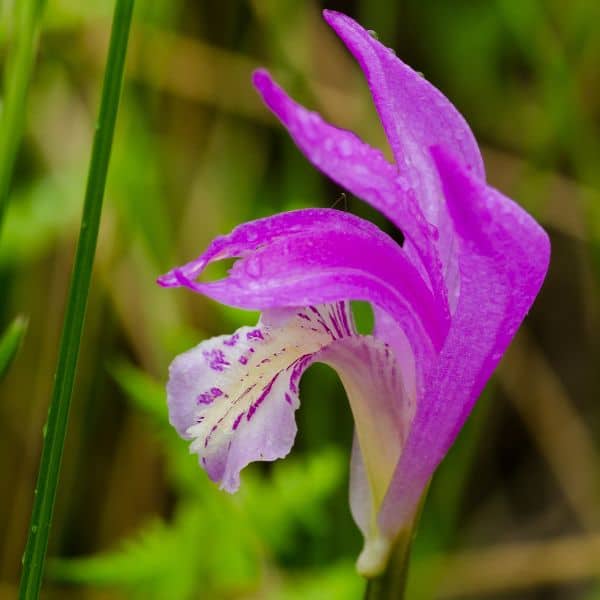

Growing orchids requires dedication, time, and loads of TLC. Don’t struggle to find the most suitable humidifier for your needs. We have reviewed the best options for you. Take a look at our reviews list, it is sure to guide you in the right direction.
Interesting Note
The Cloud Forest at Gardens by the Bay in Singapore maintains a humidity of 80 to 90% and has many orchids to see in this unique space. A new Orchid Haven space has been added recently.
Fabulous place to visit in Singapore!
